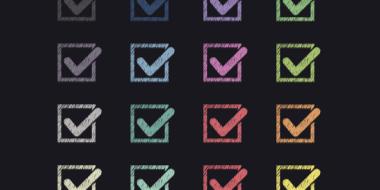Resume and CV: What Are the Differences?
It’s usually thought that a CV and a resume are one and the same document. While this is true in some countries, in other countries, major differences exist between the two.

United States and Canada
The difference between a resume and a CV mainly only applies in the United States and Canada. When applying for a non-academic position, you send a resume, when applying for an academic position or a scholarship, you send a CV.
The UK, Ireland, Australia, New Zealand and Europe
In the UK, Ireland, Europe, Australia and New Zealand, a CV and a resume mean the same thing, although there may be slight variations depending on the country. With the exception of Australia where both terms are used, a resume is only referred to as a CV in these countries.
South Africa
In South Africa, there are two types of CV: a brief profile and a comprehensive CV. A brief profile is a one-page CV and is a shorter version of the comprehensive CV; this is similar to a resume or a CV as it is known in Europe, Australia and New Zealand.
However, both ‘CV’ and ‘resume’ are used synonymously.
What is an American CV?
A CV, as an abbreviation of the Latin ‘course of life’ and that is exactly what it is: a detailed overview of your professional life, including:
- Your contact information
- Your work experience
- Your education
- Your publications and awards
- Your academic qualifications
- Your non-academic activities
- Your personal qualities and skills
- Your language skills
- Your references
CVs are used when applying for fellowships, grants, postdoctoral positions, and teaching/research positions in postsecondary institutions or high-level research positions in industry, and are usually accompanied by a cover letter.
On the basis of these two documents, the future employer determines whether a candidate has the required skills and knowledge necessary to perform the job properly.
As this style of CV is a static document, it’s not tailored to the position. If you want to highlight specific skills or accomplishments, you do this in the cover letter.
Sometimes, employers initially request a condensed, one-page version of the CV (known as a CV summary), if they’re expecting a large volume of applications.
What is a resume?
The English term resume comes from the French word résumé which means 'summarized'. Similarly to the English CV, a resume is a 1-2 page document, which gives recruiters and employers a brief overview of your work experience, education and skills. As it is a marketing tool, a resume only highlights relevant skills and experience.
The following sections are typically included in a resume:
- Contact information
- Personal profile/summary or objective
- Work experience
- Education
- Skills
- Training/courses/professional affiliations
You may also choose to add complementary sections related to volunteering, hobbies and interests as further proof of your skills.
With a resume, the format is not fixed and you‘re free to choose the one that’s best suited to your situation and the job you’re applying for:
- Chronological: in date order
- Functional: skills-based
- Combination/hybrid: a combination of both
What’s the proper spelling for ‘resume’?
Although originally spelled “résumé” in French, in English, the spelling ‘resume’ is accepted.
What are the differences between the two?
The three main differences between a resume and an American-style CV are:
A resume is a short summary of your skills and your work experience on one or two pages. The American CV describes your career in much more detail and can certainly be more than two A4 pages long. Where a CV usually lists your work experience and diplomas in chronological order, the layout of a resume depends on your work experience and skills.
In a nutshell, resumes are competency-based documents, which showcase your skills, experience and achievements in the most positive light. American CVs, on the other hand, are credential-based, providing a comprehensive overview of your education, certifications, research experience, and professional affiliations and memberships.
Document length and layout are two also prominent differences between a resume and an American CV. A resume is a concise and focused summary of your skills and achievements and is usually, no more than 2 A4 pages long; the format is also not fixed as it can be adapted to each position.
In contrast, an American-style CV can be longer and is a static document as it charts your entire career history and education.
To sum up:
- Resume: a concise and personal document without a fixed layout that can be fully adapted to the vacancy; the focus is on professional experience and achievements.
- American CV: a long, comprehensive document that sums up your entire career; mostly used for academic positions or applications for study programs.
When do you send a CV?
As mentioned, you mainly use a CV in the United States and Canada if you’re looking for an academic, medical or educational position. A CV, in this instance, is intended to provide a detailed picture of where you stand on the career ladder, what your specific knowledge is in a particular subject and whether your personal skills match the job offered.
When do you send a resume?
A resume is used to apply for almost any non-academic position. If you’re applying for a position in Europe or at an American or Canadian company based in Europe, you also send a resume.
EXPERT TIP
If you’re based in the US or Canada, it’s a good idea to create both types of CVs as you never know when you might need them. Having the right CV could make all the difference in a sea of candidates.
Consider using a CV builder
Whether you decide to send a resume or an American CV, it can get confusing, knowing which sections to include and which to leave out. A CV builder such as Jobseeker can take the hassle out of updating your CV. Simply enter your information and a CV template or resume template, and your resume is ready to download.



